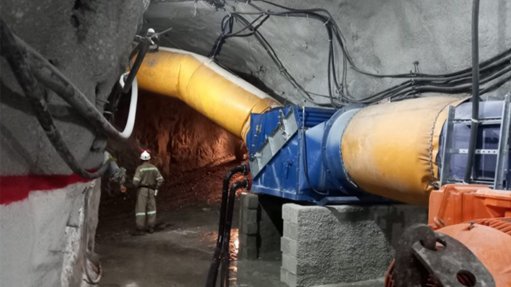
DEEP BREATH BBE have successfully installed an underground ventilation system at a mine in Brazil
Mine ventilation, refrigeration and cooling engineering consultant BBE Group has successfully completed the installation of a ventilation and cooling system at the Caraíba mine, in the Curaçá river valley, in Brazil.
The deepening of a shaft to open up a new orebody in the mine had put the previous ventilation and cooling system under pressure, and it was incapable of meeting the mine’s safety requirements.
“BBE was brought in to consult on and supply the full cooling system, which includes a radiator, spot cooler, fan and cooling coil, as well as general ancillary items,” says BBE director Richard Gundersen.
The system has maintained an air temperature under 30 °C since it was commissioned in November 2021.
The underground chiller, or spot cooler, was manufactured and delivered to the mine by industrial refrigeration company KTI Plersch Kältetechnik.
Gundersen says that KTI had developed its range of specialised underground chillers with cooling capacities of up to 600 kW in one unit, but until this contract, had yet to find a suitable client.
Notably, the chillers are specially designed for the adverse conditions and heavy-duty demands in the mining industry and are easy to transport through the mine shaft.
“An engineer from United Mining Services, served as our ‘eyes on the ground’, helping us assess the mine’s requirements so that we could work on the best possible solution for the mine, without having to travel to Brazil to do so,” he says.
Gundersen lauds South African manufacturer Manos Engineering for designing and supplying the cooling coils for the project.
He adds that other infrastructure and elements such as the pumps, fans and high- density polyethylene pipes were sourced and procured by the mine under BBE’s instruction.
He suggests that, not only were logistics a challenge for the project, owing to the various component suppliers being on different continents, but so was the language cocktail and time differences between the German, Brazilian and South African technicians working on the project.
However, Gundersen says that, with a common goal and a general understanding of what was needed on the project, everyone managed to come together to complete the project successfully.
A fully qualified technician from KTI was able to commission the complete installation.
“The project was a collaboration across countries and languages, in conjunction with global mining and minerals processing company United Mining Services,” he concludes.